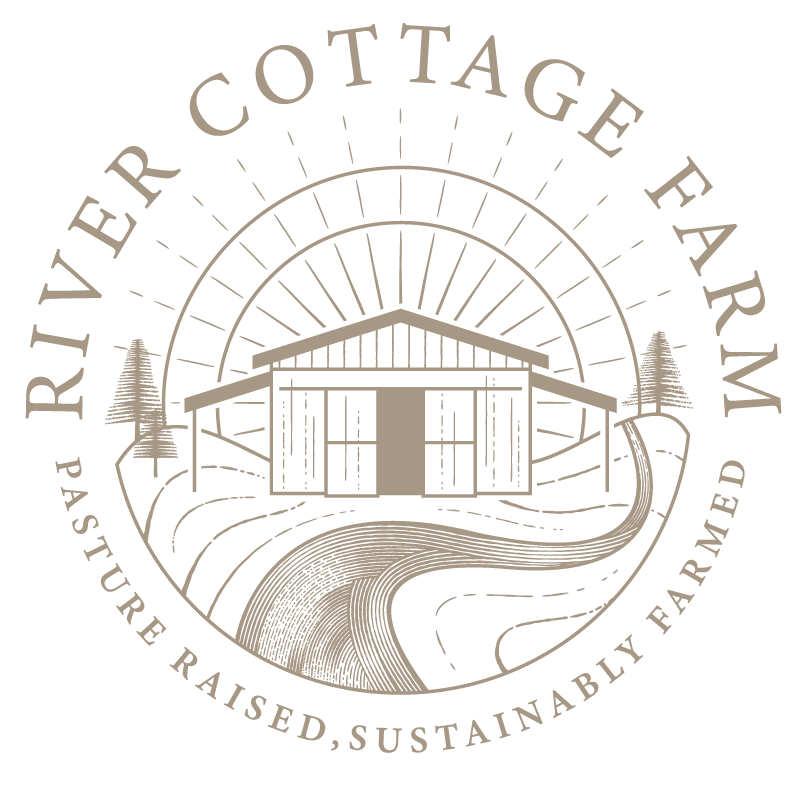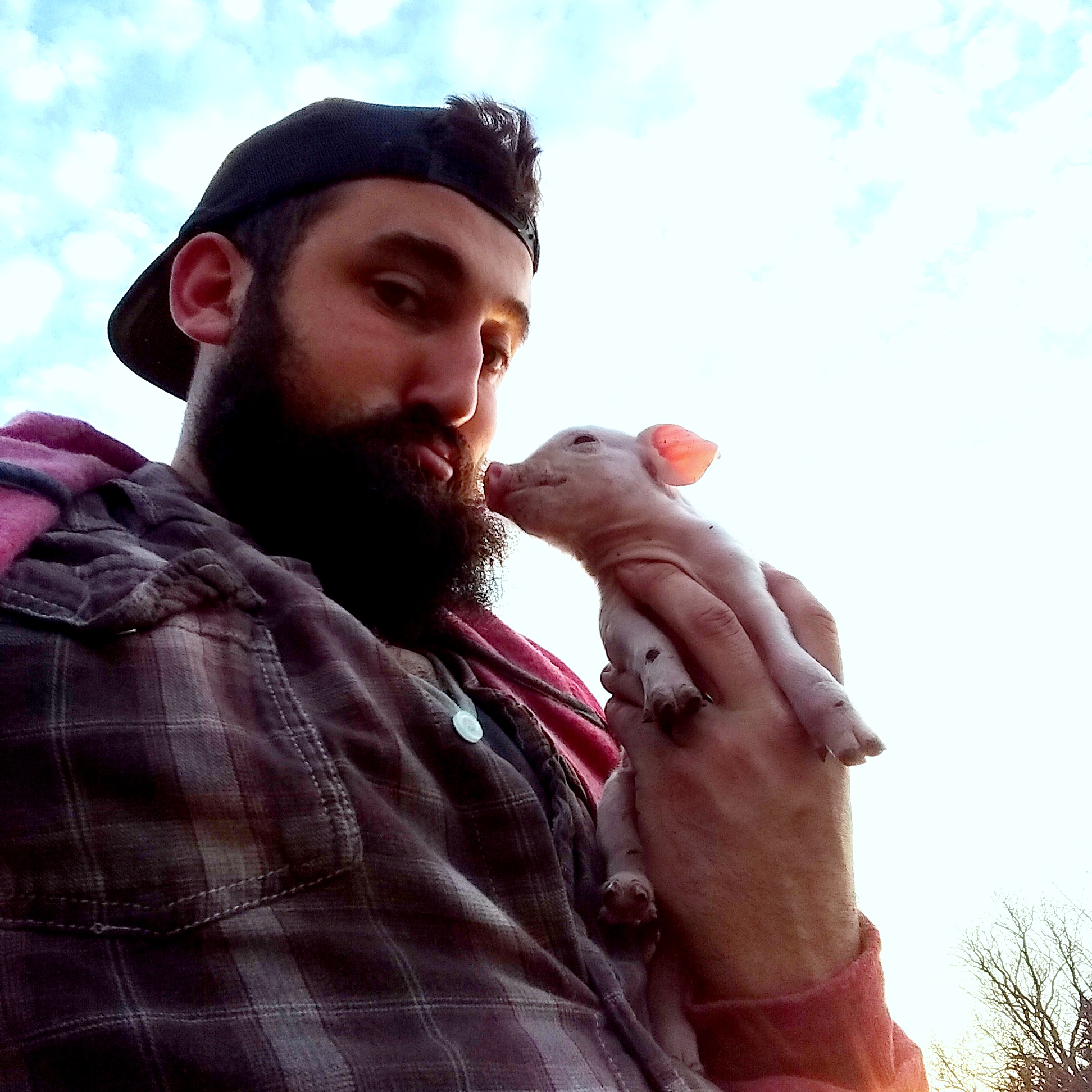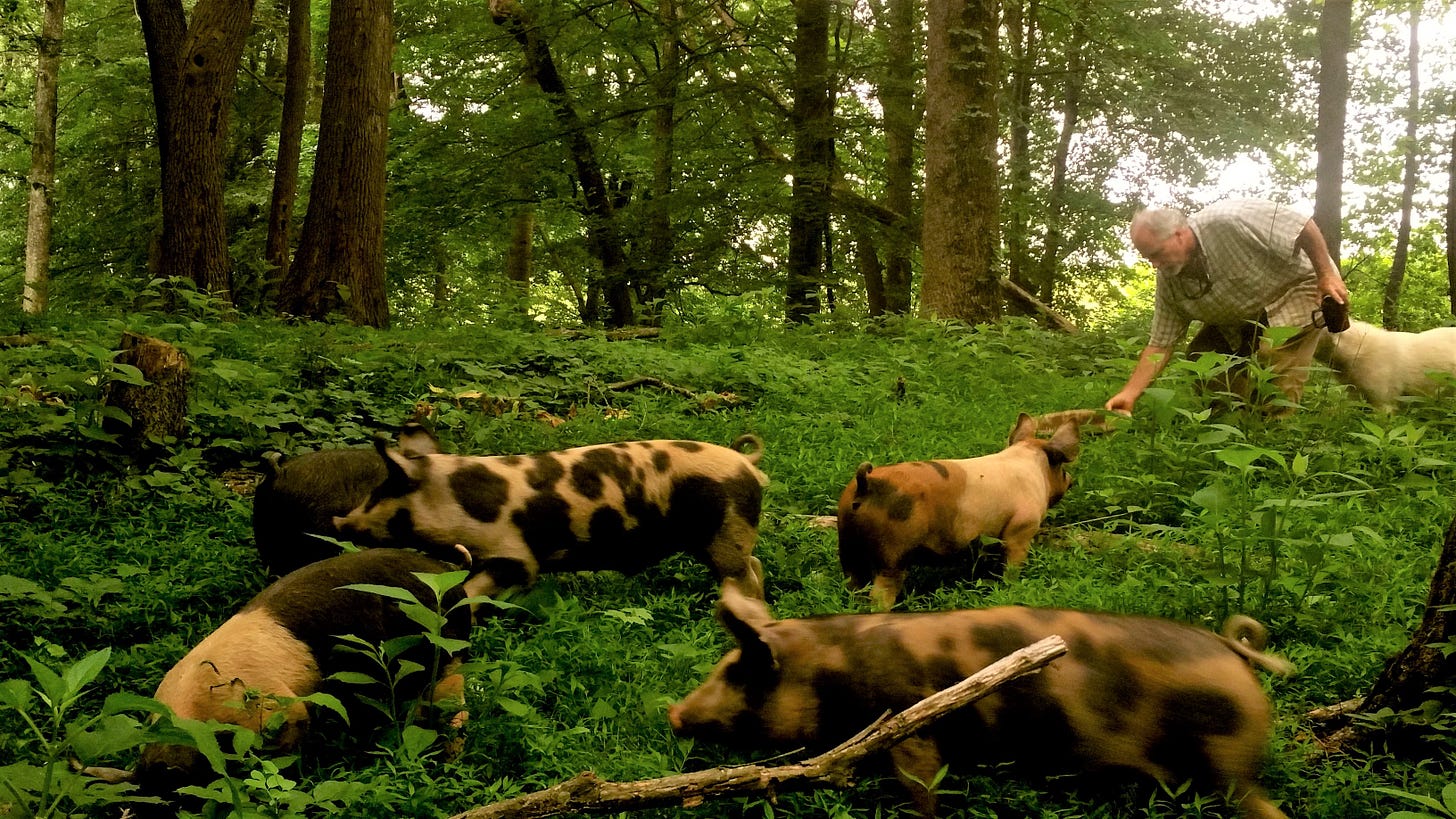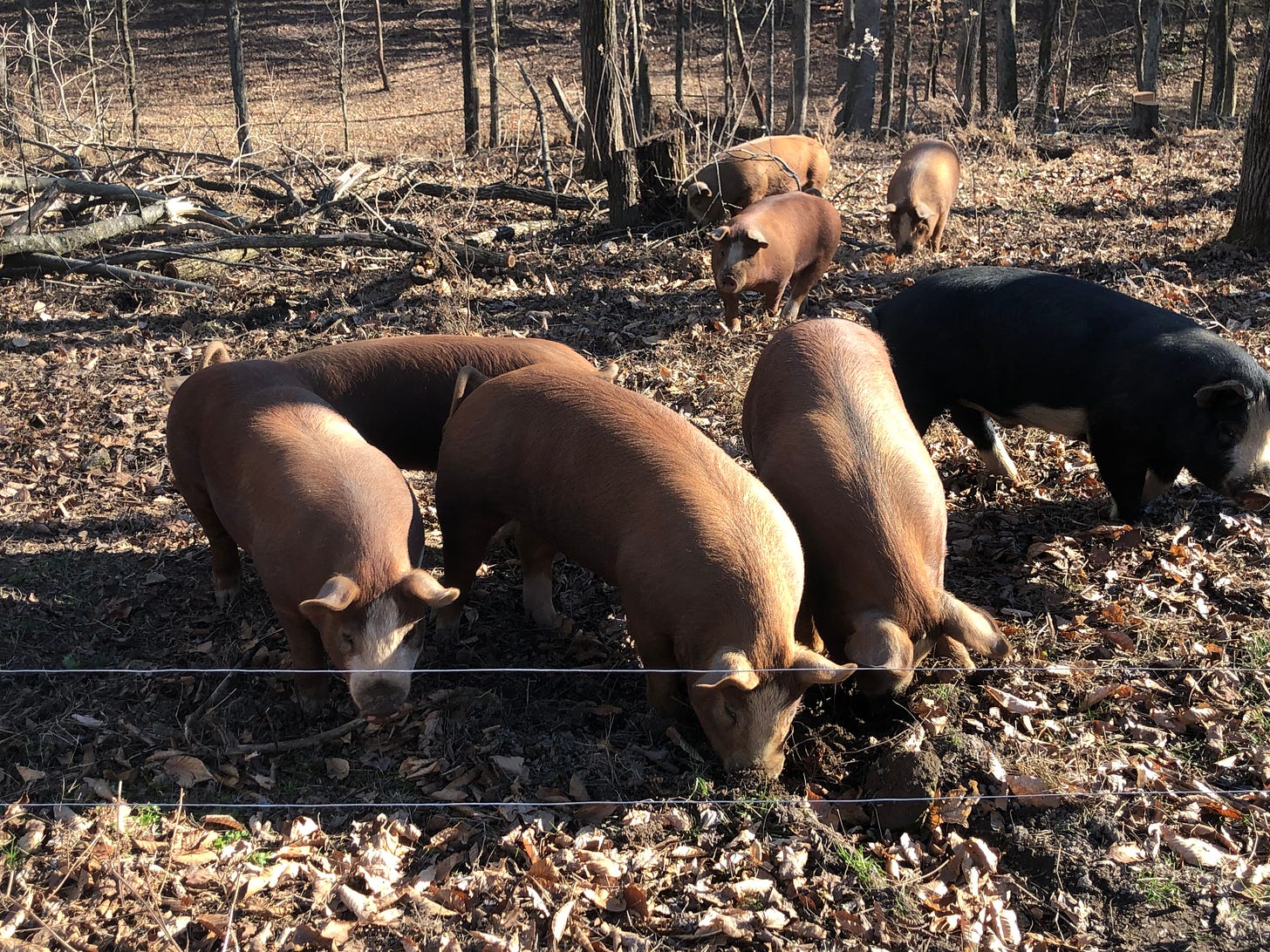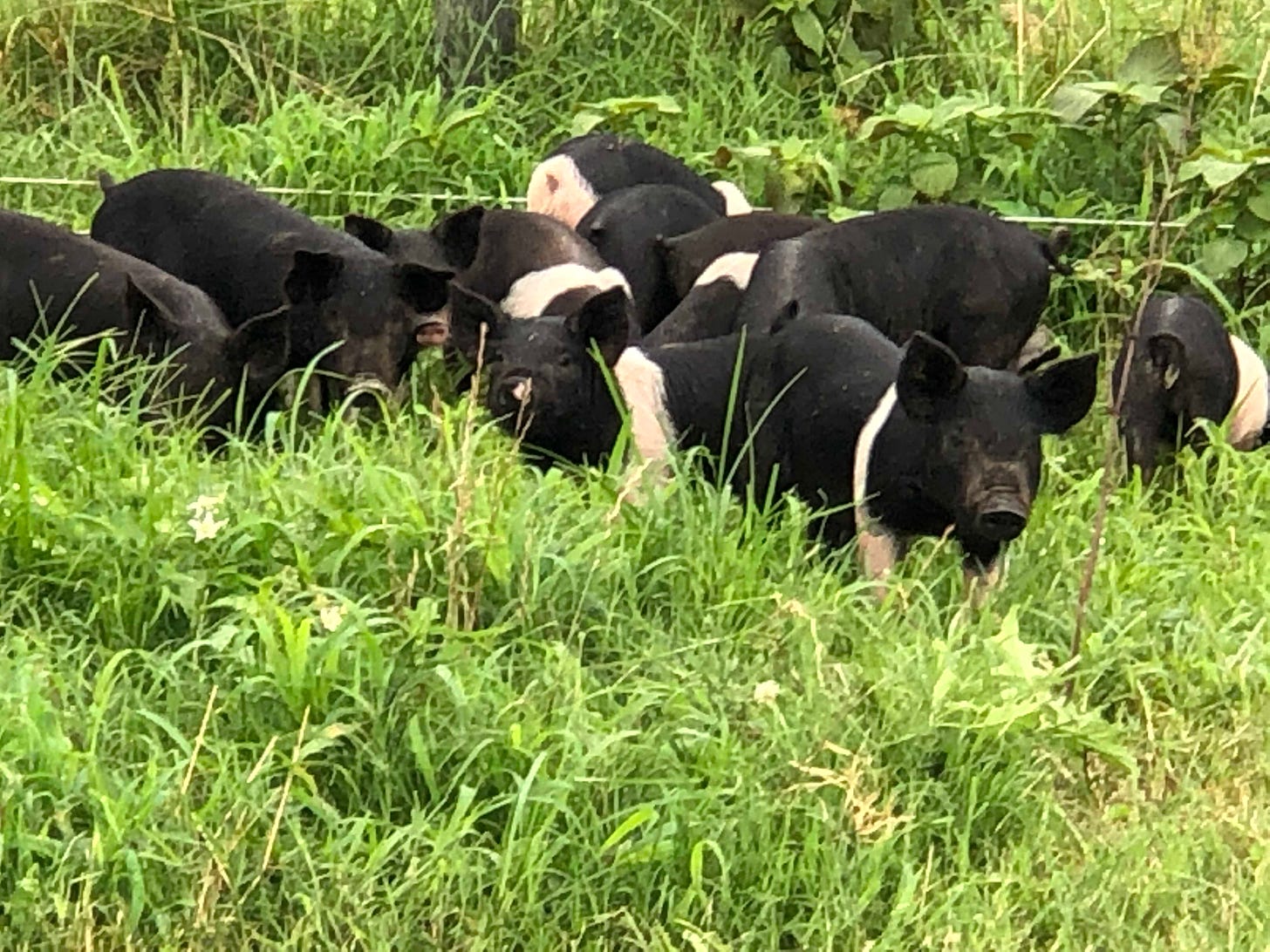You are part of a cycle you can be proud of.
I dislike the thought that some animal has been made miserable to feed me. If I am going to eat meat, I want it to be from an animal that has lived a pleasant, uncrowded life outdoors, on bountiful pasture, with good water nearby and trees for shade.” Wendell Berry, What Are People For?
We could not agree with Wendell more on this point: our farm and our daily work schedule is a testament to that fact. We know that our customers feel the same so we thought it was time to run through the roster and explain how our animals live their lives at River Cottage Farm.
Every week I’ll highlight another inhabitant of the farm showing you how they live and also, how they contribute to the whole system that supports our regenerative farm.
Since our pigs believe that all animals are created equal but some are more equal than others…we will start here, with the pigs.
Our pigs are really the workhorses of the farm. With their destructing snouts they can barrel through terrain that no other animals on the farm could manage, let alone thrive in.
Our pigs live in the woods working with us to create silvopastures from unusable, inaccessible forestland. Please don’t tell the pigs this but, really, they work all day long to create a place where cattle and sheep will graze, years from now, with plenty of beautiful trees for shade. Silvopasturing is the practice of integrating trees, forage, and the grazing of animals in a mutually beneficial way; there are two ways to create this form of agroforestry on the farm and both begin with a multi-generational mindset. You can start with a forest and thin out trees and brush slowly, mindful of the life contained in the forest or you can start with a pasture, add trees, keeping all the animals off the pastures for at least 5 years while the trees grow. We are building our silvopastures using both methods.
Three years ago we couldn’t even walk into this forest but with the pigs doing the work by rooting for acorns, hickory, beech, black walnuts, and briar roots, we are now able to seed pasture grasses in their wake. By using the pigs instead of heavy equipment, all the natural habitat for wildlife remains intact and as the pigs are moved to new territory every week we come in behind them, taking out small, diseased, or crowded trees to make room for reseeding pasture grasses into the understory of the trees.
In order to make sure the pigs are treated humanely from birth to death we keep four sows and a boar and allow them to breed naturally. They eat transitional, Non GMO feed (within the three year transitional period to organic certification) along with small grains from Harding House Brewery and all the nuts, berries, and roots they can eat!
All of our piglets start their lives with mom until weaning. When they’re ready, and no sooner, they move out into the training pen where they learn all about electric fencing and how to work within a specific area.
Pigs raised this way are an extremely important part of the cycle of a regenerative farm. We once rescued a group of piglets from a commercial, organic farm and I will never, ever forget the first moment they experienced the ground, real ground, not concrete. It was a miracle moment for me and made me so proud to know that our pigs would never need to know what to do on a concrete floor in a hog barn with a thousand other pigs.
Thank you for supporting our farm. Thank you from all of us, pigs included!
